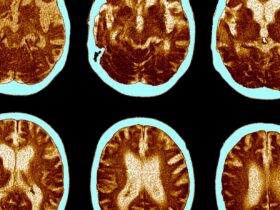In the icy depths of the Arctic, a chilling revelation has sent shockwaves through the scientific community—a potential zombie virus that could serve as the catalyst for the next pandemic. This article delves into the recent findings that have scientists on high alert, exploring the origin of this mysterious virus, the potential risks it poses, and the urgent measures required to mitigate the threat.

The Arctic’s Hidden Menace: Unveiling the Zombie Virus
Scientists have uncovered evidence of a virus in the Arctic permafrost that is raising concerns about its pandemic potential. This virus, with characteristics reminiscent of the fictional zombie apocalypse, is not an immediate threat but is drawing attention due to its ability to survive in the extreme conditions of the Arctic. While it doesn’t turn humans into zombies, the term “zombie virus” is used metaphorically to underscore its potential for widespread and unpredictable consequences.
The discovery is rooted in the melting permafrost, a consequence of global warming. As Arctic ice thaws, ancient viruses and bacteria that have been dormant for millennia are resurfacing. The resilience of these organisms, combined with their unfamiliar nature, has sparked fears of a new, unpredictable threat to global health.
Arctic Thaw: The Impact of Climate Change on Ancient Pathogens
Climate change, driven by human activities, is reshaping the Arctic landscape at an unprecedented rate. As temperatures rise, the once-frozen layers of permafrost are thawing, revealing a trove of ancient pathogens that have been preserved in the ice. This process has far-reaching implications, not only for the Arctic ecosystem but for the global community.
The release of these ancient pathogens, like the potential zombie virus, into the environment raises questions about their adaptability to contemporary conditions. As they come into contact with modern organisms, including humans, the risk of transmission and infection becomes a concern. The intersection of climate change and public health is a complex challenge that requires interdisciplinary efforts to understand and address potential threats.
Assessing the Risks: From the Arctic to Global Pandemic Potential
While the term “zombie virus” captures the public imagination, the actual risks associated with the virus found in the Arctic permafrost are still being studied. Scientists are working diligently to assess its genetic makeup, transmissibility, and potential for harm. Understanding these factors is crucial in evaluating the true risk posed by this ancient pathogen and formulating effective strategies to prevent or manage its spread.
The Arctic’s connection to the global ecosystem cannot be understated. The potential for the virus to become a global threat hinges on its ability to adapt, survive, and infect organisms outside its natural habitat. As research progresses, the scientific community must collaborate to stay ahead of the curve and develop strategies to mitigate the risks associated with the release of ancient pathogens from the Arctic permafrost.
Mitigating the Threat: Urgent Measures for Global Preparedness
The discovery of a potential zombie virus in the Arctic underscores the need for proactive measures to enhance global preparedness. Mitigating the threat involves a multifaceted approach that spans scientific research, international collaboration, and environmental stewardship.
First and foremost, increased funding and support for scientific research are essential. Understanding the genetic makeup and characteristics of the virus is crucial for developing targeted interventions and preventive measures. International collaboration is equally vital, as the threat transcends national borders. The sharing of information, resources, and expertise will be instrumental in crafting a unified response to potential pandemics originating from unexpected sources.
Additionally, addressing the root cause of the issue—climate change—is imperative. Efforts to mitigate global warming and reduce greenhouse gas emissions can help slow the thawing of the Arctic permafrost, minimizing the release of ancient pathogens into the environment. A renewed commitment to sustainable practices and environmental conservation is crucial in safeguarding the delicate balance of ecosystems and preventing unforeseen health threats.
Conclusion
The revelation of a potential zombie virus in the Arctic serves as a stark reminder of the complex interplay between environmental changes and global health. As climate change continues to reshape the Arctic landscape, ancient pathogens are resurfacing, presenting new challenges for scientific understanding and public health preparedness. The urgency of the situation demands international collaboration, increased research efforts, and a commitment to addressing the root causes of climate change. In navigating the uncharted territory of potential pandemics, the world must unite to develop strategies that protect both the Arctic ecosystem and the global community from unforeseen health threats.






